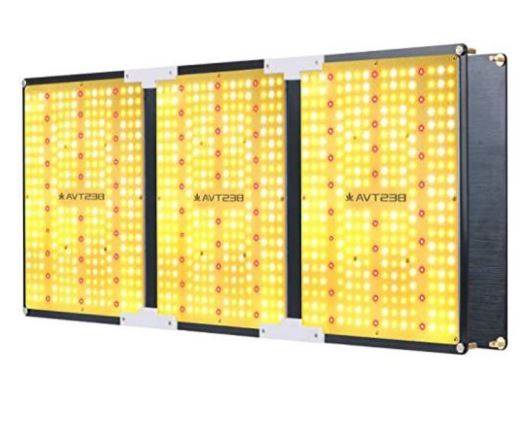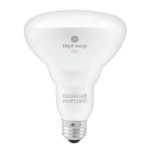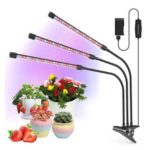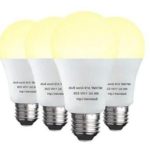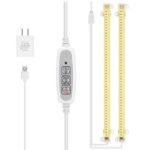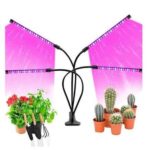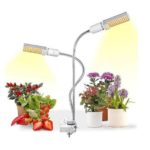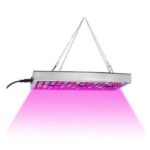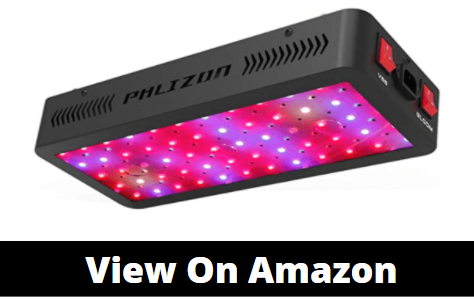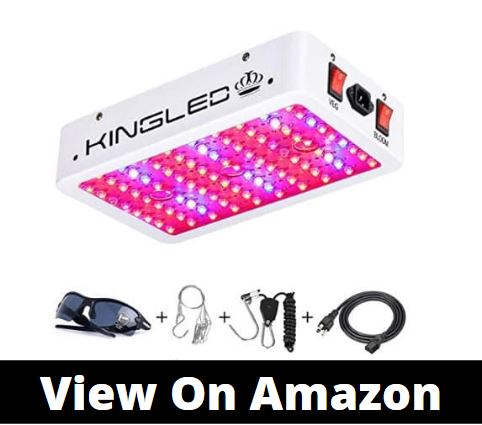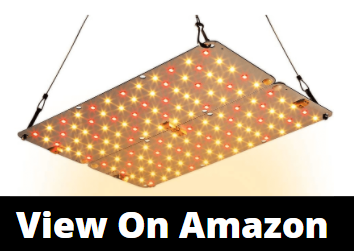Guiding Tips for Choosing Best Grow Lights for Your Indoor Plants
Growing plants outdoors seems to be more difficult. Keeping the right balance of moisture and nutrients is an ordeal for many people. In recent times, indoor gardens have become popular. Many people are turning to it to avoid difficult conditions and other environmental extremes. Growing indoor plants under artificial light is an excellent idea to assist you in achieving your gardening goals. With insufficient light, your indoor plants or flowers may struggle and grow poorly. There are many ‘Grow Lights‘ options you can choose for your plants. The checklist below will guide you to choose the right ‘grow light’ for your indoor garden:
10 Best Grow Lights for Indoor Plants in the Market
Best Grow Lights Review + Guide
Lighting Plan and Duration
The kind of indoor gardening you undertake determines the lighting plan. Different types of houseplants have different requirements. Therefore, different lighting plans, transplants, and flowering plants require different nutrients and light balance levels. Transplants like emerging seedlings and young plants usually do well in full-spectrum light, with both blue and red wavelengths. Also, the source of light in transplants must be within six inches of the plant foliage to achieve the best outcomes.
For the indoor flowering plants, red light waves will enhance flowering and fruit production. It is advisable to purchase LED bulbs explicitly for growing plants; these lights labeled “grow lights” produce many red-light waves. High-output LEDs or ultra-bright lights are useful for growing plants native to sunlight and dry conditions such as cactus, geranium, etc. All plants require darkness to respirate. This is crucial for the growing process. Therefore, you need to understand the day length category in which your houseplants fall, short-day, long-day, and day-neutral to get the right lighting duration. Short-day plants require below 12 hours of light in a day, while long-day plants such as vegetable seedlings thrive in 14-18 hours of sunshine. The day-neutral plants do well with 8-12 hours light all year.
Relevant Grow Light Colour
Sunlight has a full spectrum of light. Just like plants growing outdoors, houseplants also thrive under full-spectrum light. The full-spectrum bulbs produce a warm and cold condition that mimics the solar spectrum. It is also vital to comment that the full-spectrum light from bulbs is useful for seedlings and houseplants, herbs, and many other plants.
Right Lighting Spectrum and Intensity
Before you start looking for appropriate ‘grow lights,’ it’s ideal to appreciate the basics of light intensity and spectrum. Every plant species requires a specific amount of light to achieve the best results, and full-spectrum is a representation of the sunlight ranges. Therefore, use full spectrum grow light for flowering plants and aquariums that need high-output LEDs. Blue wave spectrum is useful in the germination of seeds and the growth of vegetation. The light intensity received by a plant is directly related to brightness and the distance of the light source from the houseplant. Plants have varied needs for light intensity.
Flowering houseplants like African violets can thrive by being 10-12 inches away from the start of light. Foliage houseplants like ivy can achieve the best outcomes from 36 inches distance from the light source. However, many flowering houseplants like orchids, citrus, and some vegetables need higher light intensity to spur flowering and fruit production. Therefore, you need to choose light for your plants based on the wattage/watts. Bulbs that have higher wattage are brighter, and the opposite is also true.
Choose the Right Type
First, fluorescent tubes are the most common lighting used for supplementing light during the winter season. They aid in the flowering and germination of seeds. Fluorescent lighting is cost-effective than high-intensity lighting and incandescent bulbs. Also, in most cases, set up for fluorescent lighting is easy and cheap.
They produce less heat that can distort plants than high-output lighting and bulbs. Second, LED grow lights are more popular among indoor gardeners since they consume less electricity than other lighting forms. Also, LED lights produce minimum heat favourable for seedlings and plant growth. The LED bulbs are durable as they last longer have higher efficiency due to low energy consumption. Third, High-Intensity Discharge (HID) has two types Metal Halide and High-Pressure Sodium that are useful in indoor gardening; they offer the highest light intensity. The type of HID light one uses the kind of plants grown indoors, and the color spectrum is required. Lastly, the incandescent bulbs are useful for increasing houseplants like vines and ferns that need low light intensity. In conclusion, starting an indoor plant garden can be costly, but it is worth it since outdoor challenges are unlimited. However, an indoor garden cannot thrive if you do not have the appropriate knowledge of how to provide lighting to the houseplants or seedlings. Understanding the different grow lights and factors to consider will help you give the right nutrients and quality of light. People who want to do severe indoor gardens and obtain higher yields can use HID lighting since they have the highest light intensity. I hope you find the right grow light for your indoor plants.

